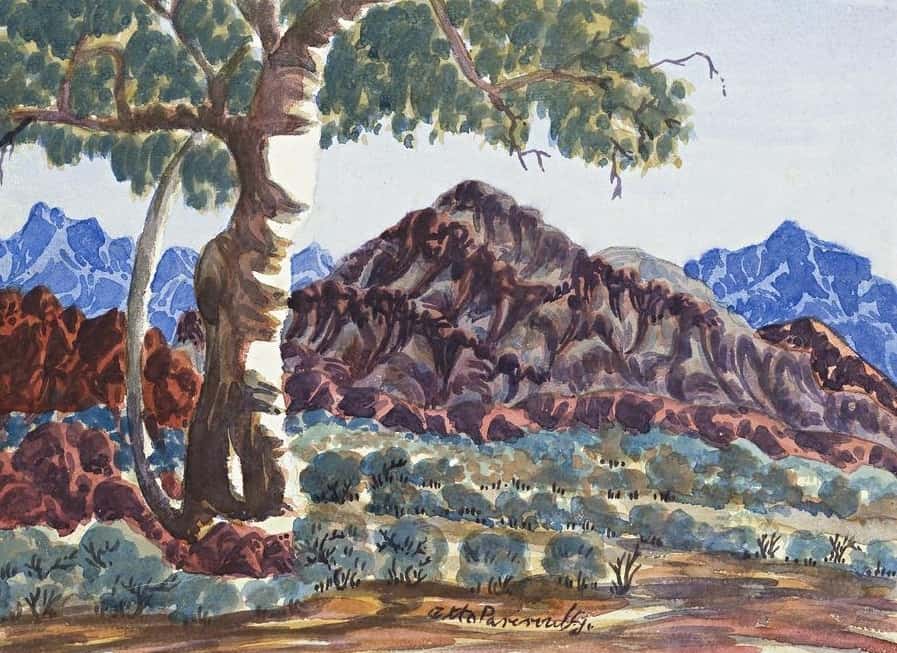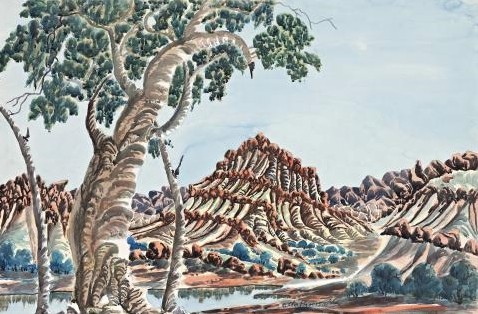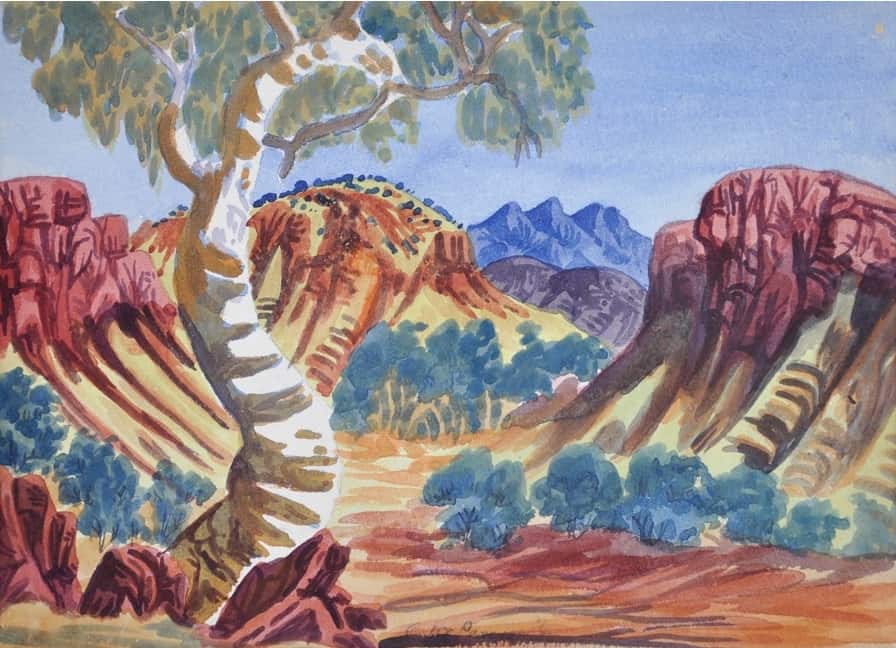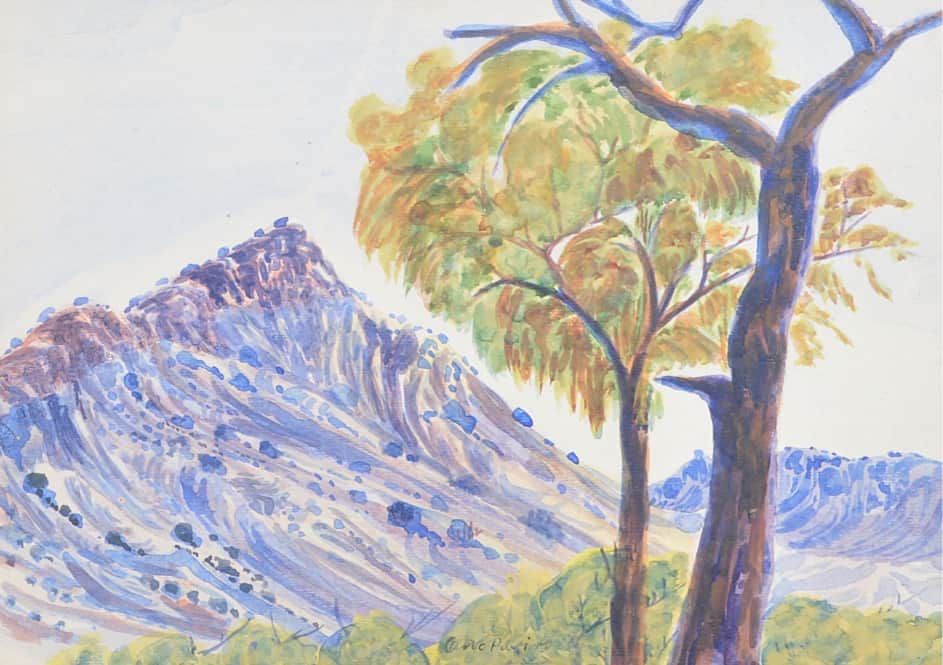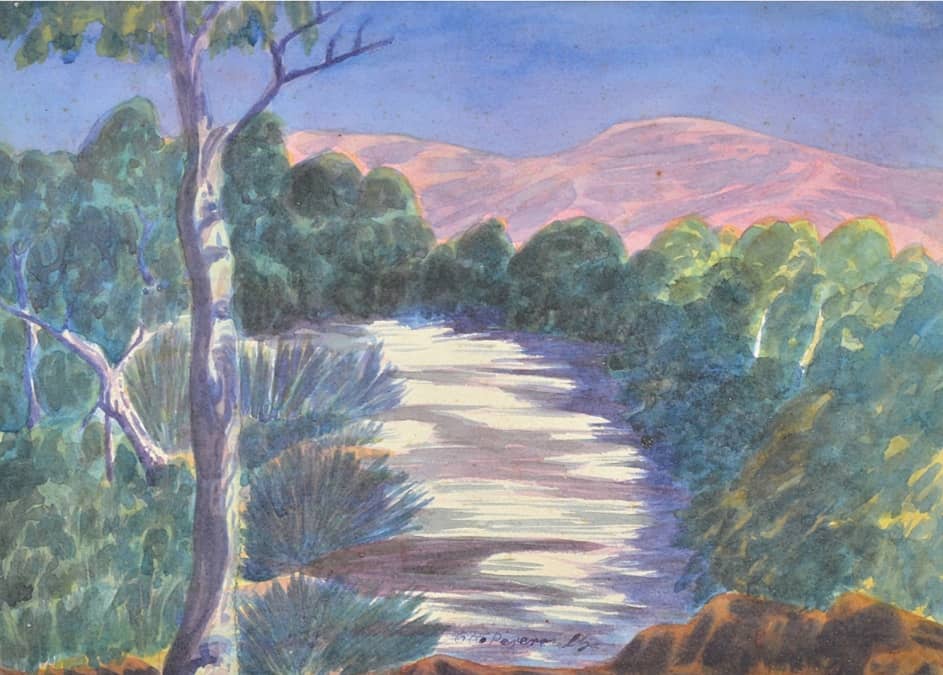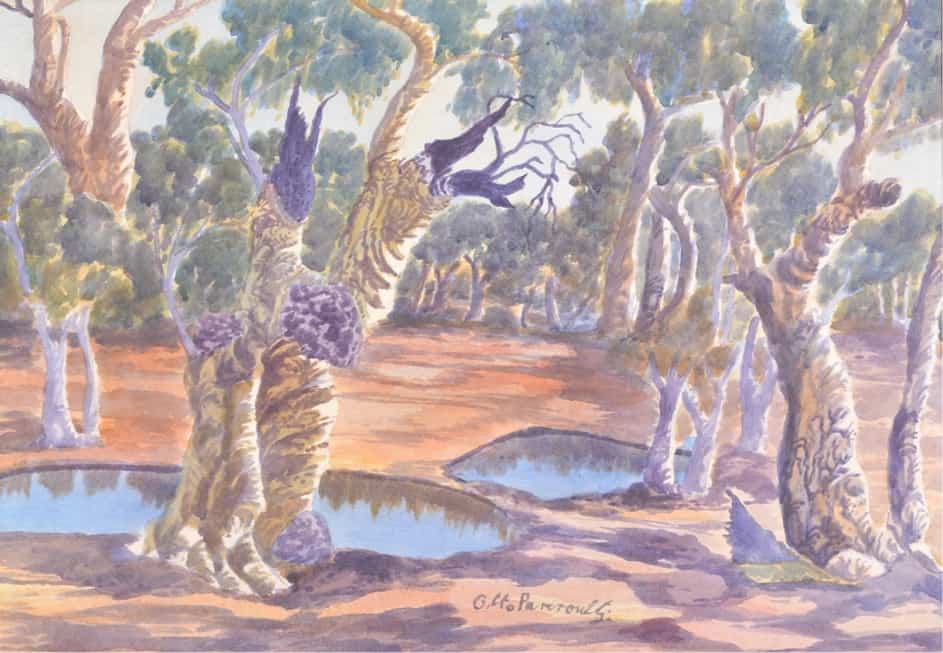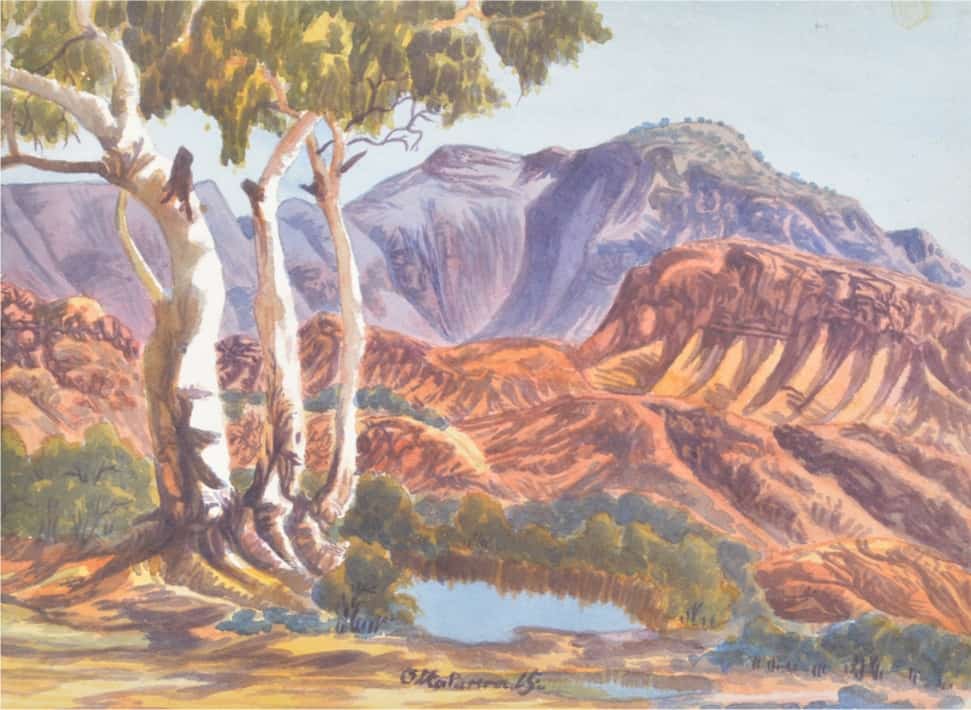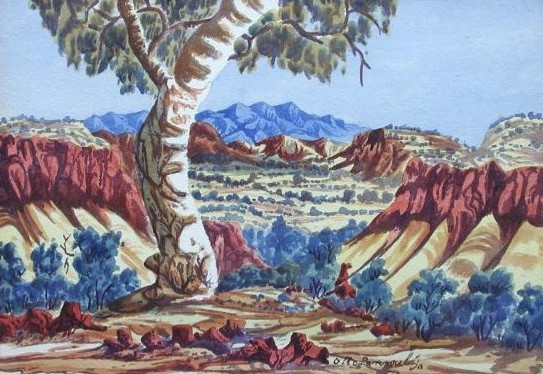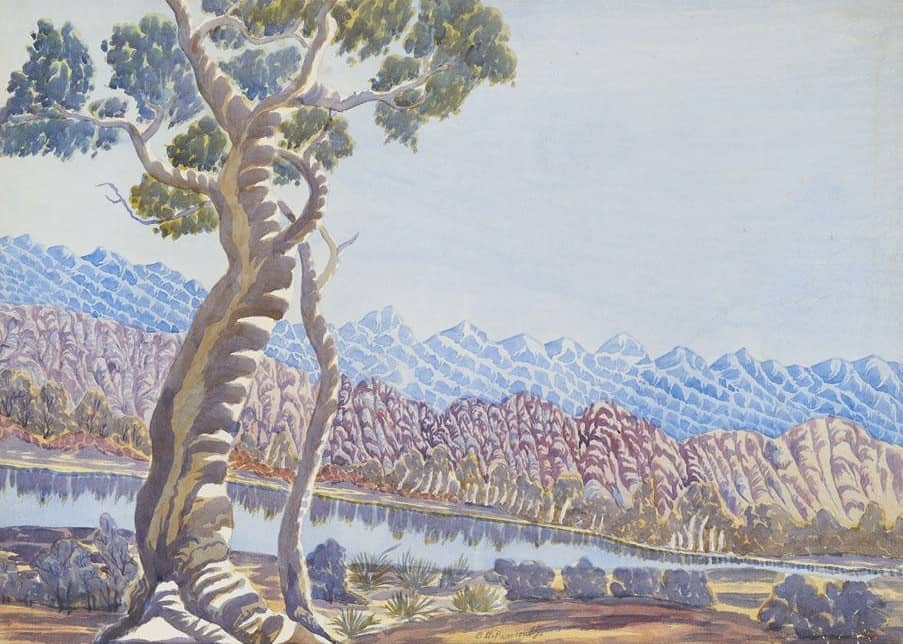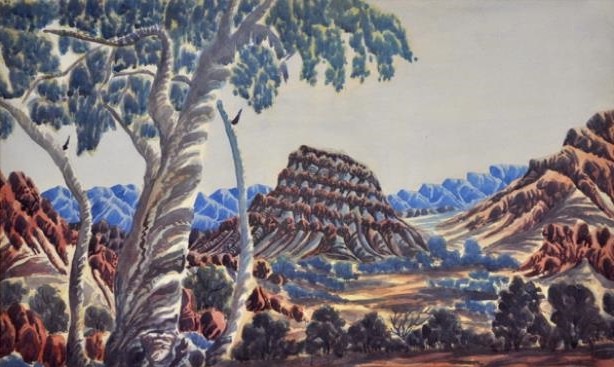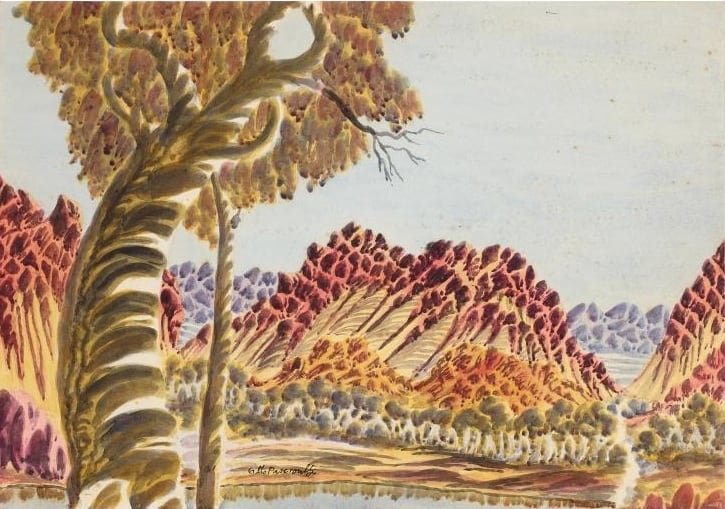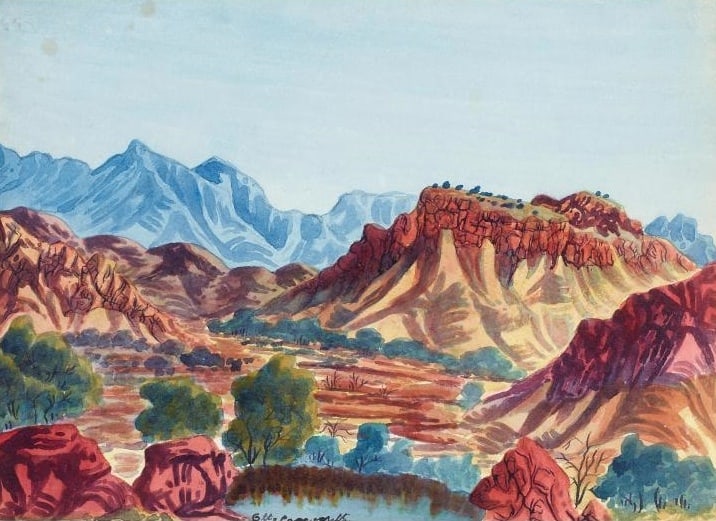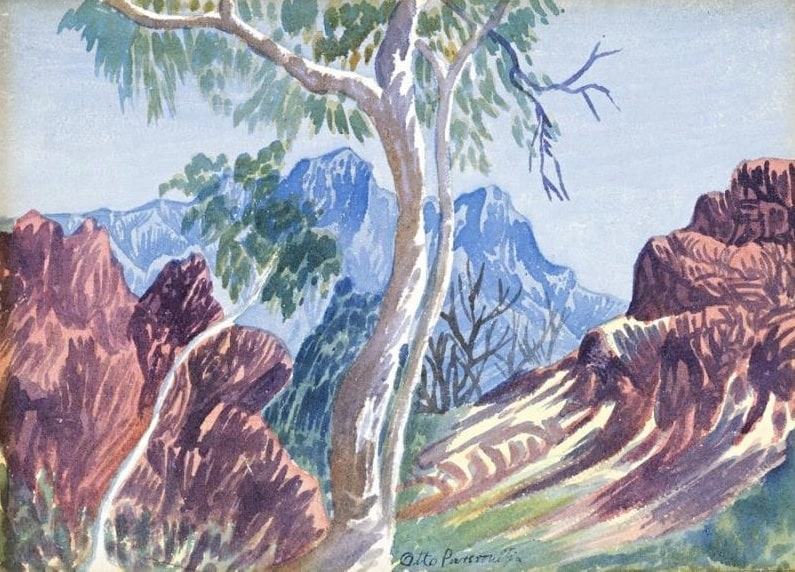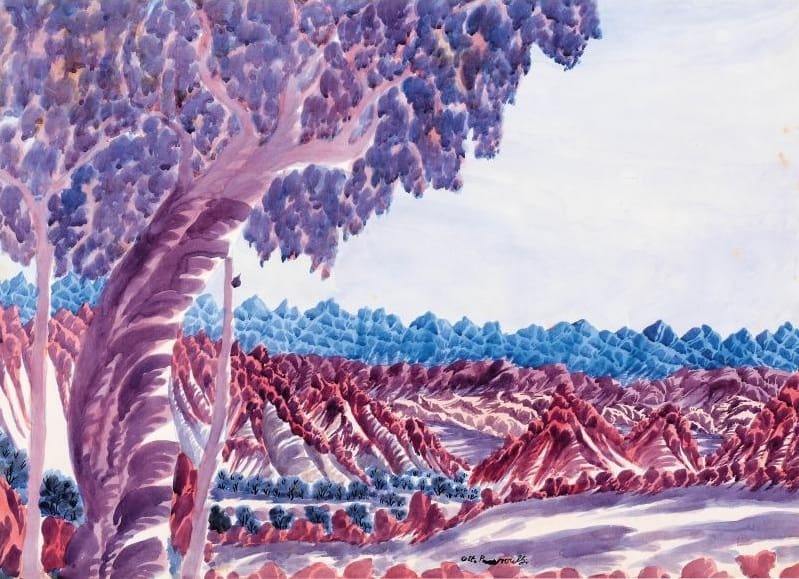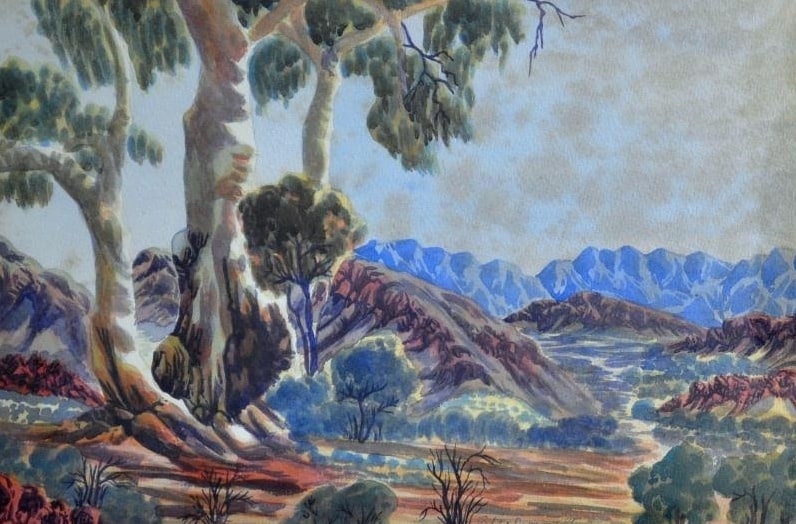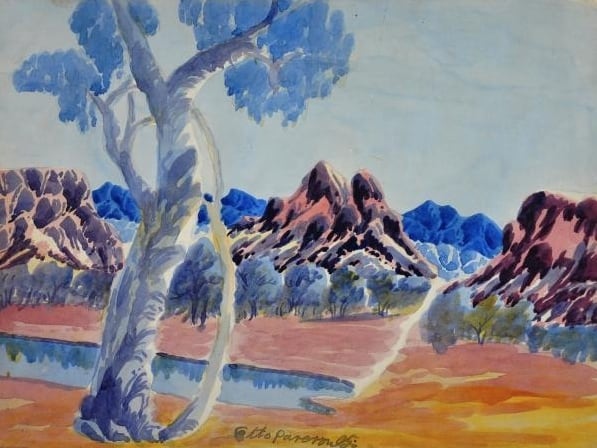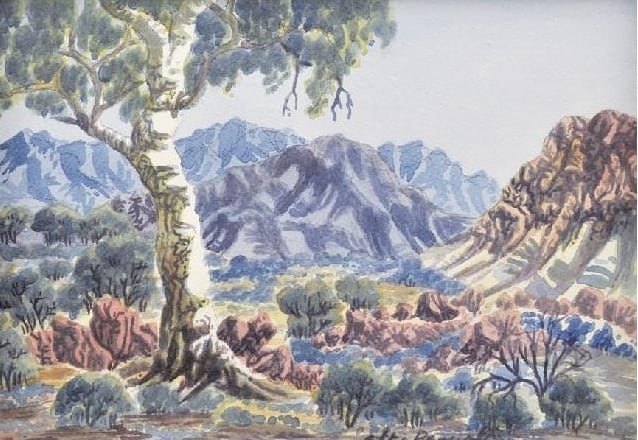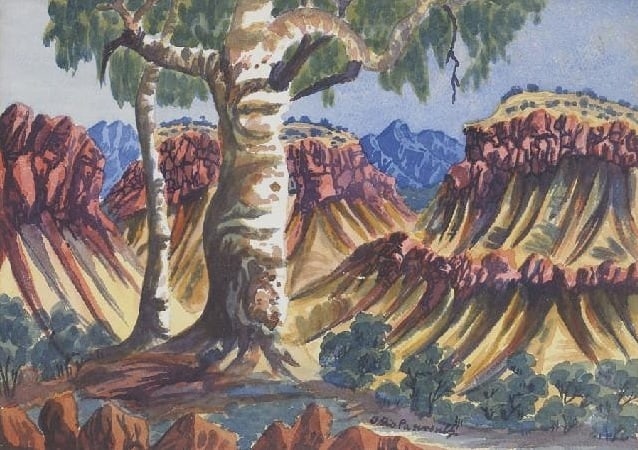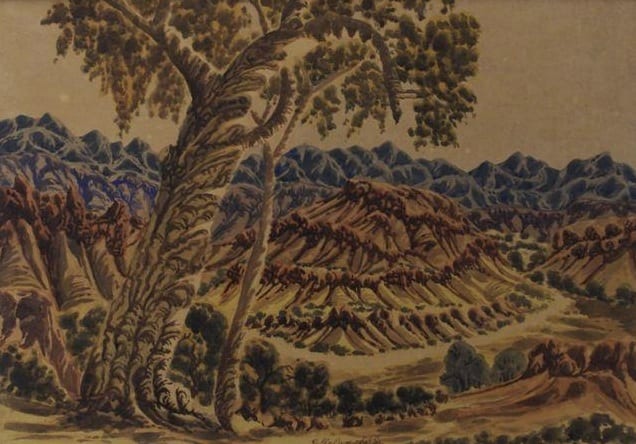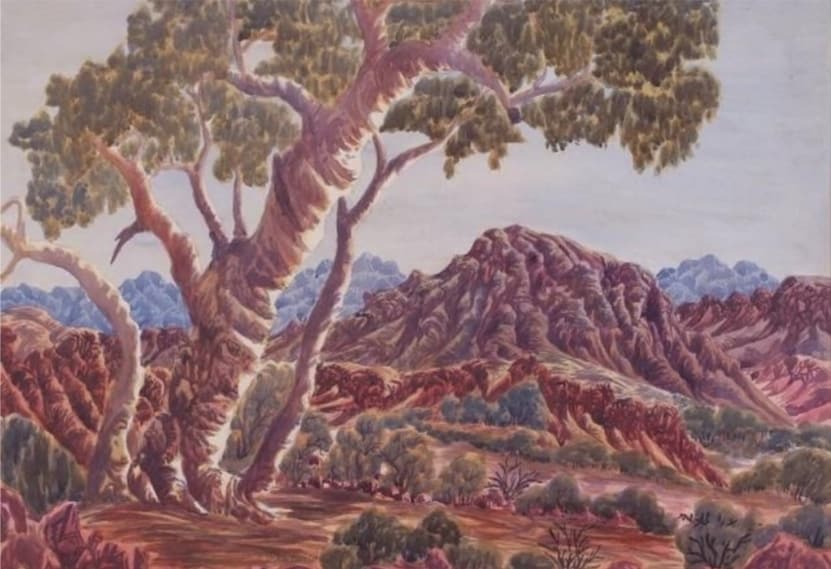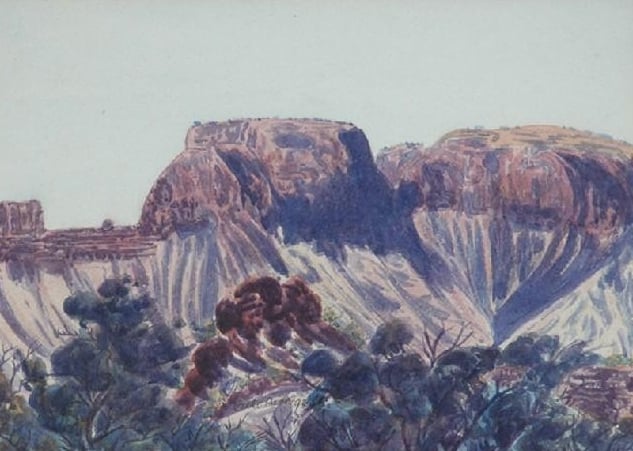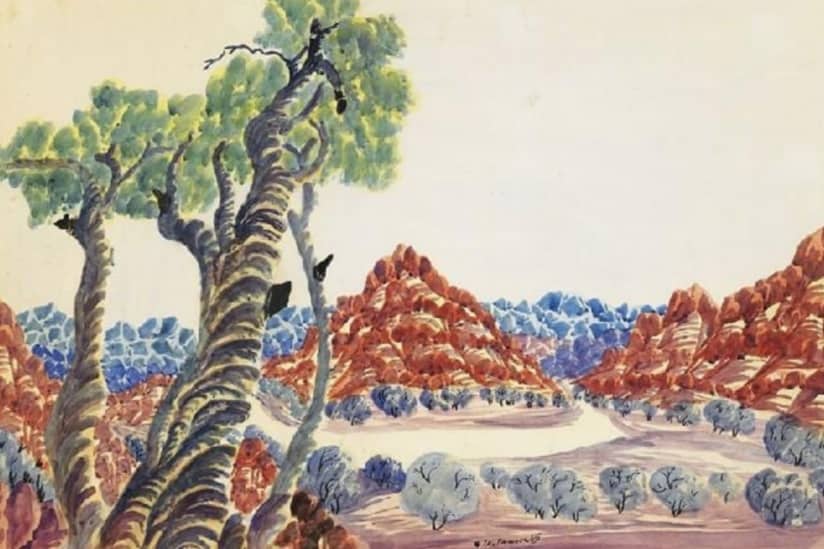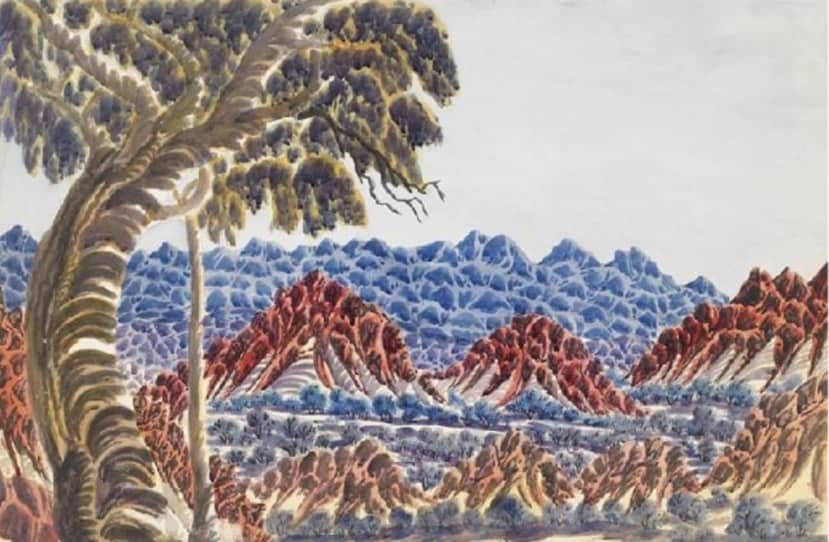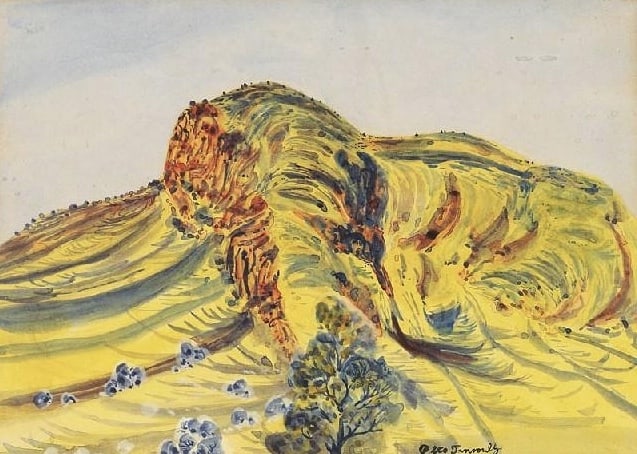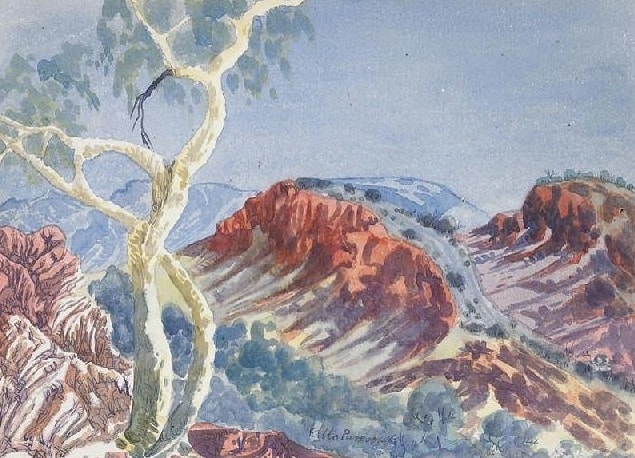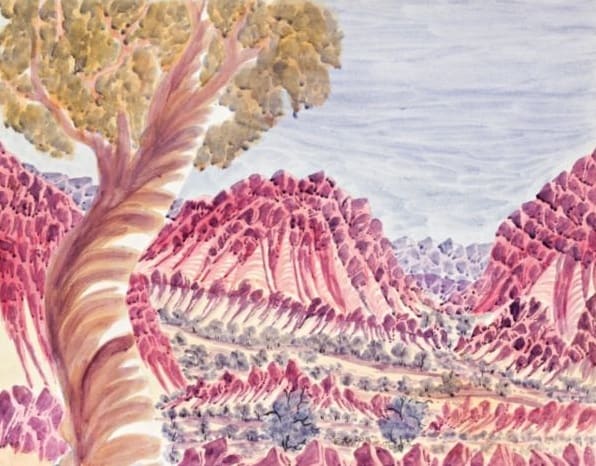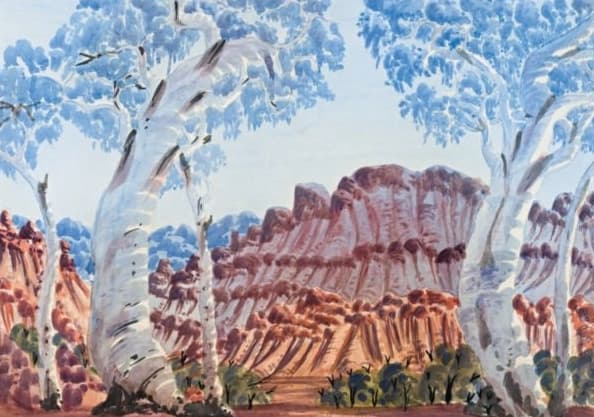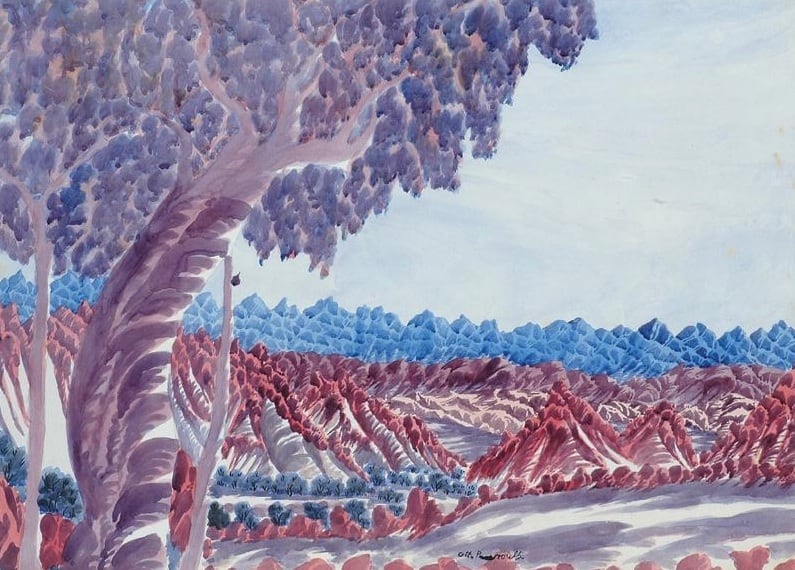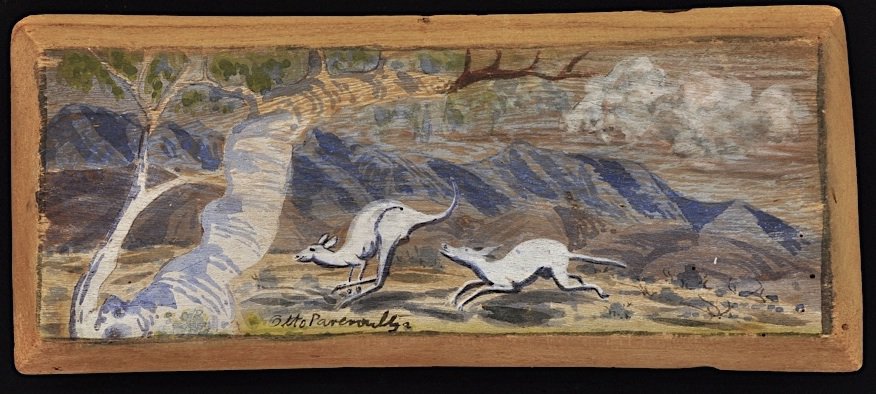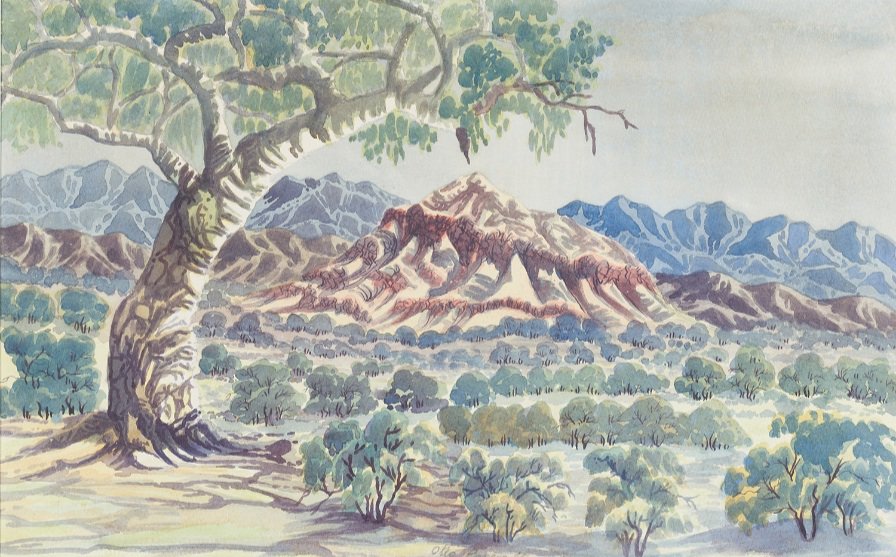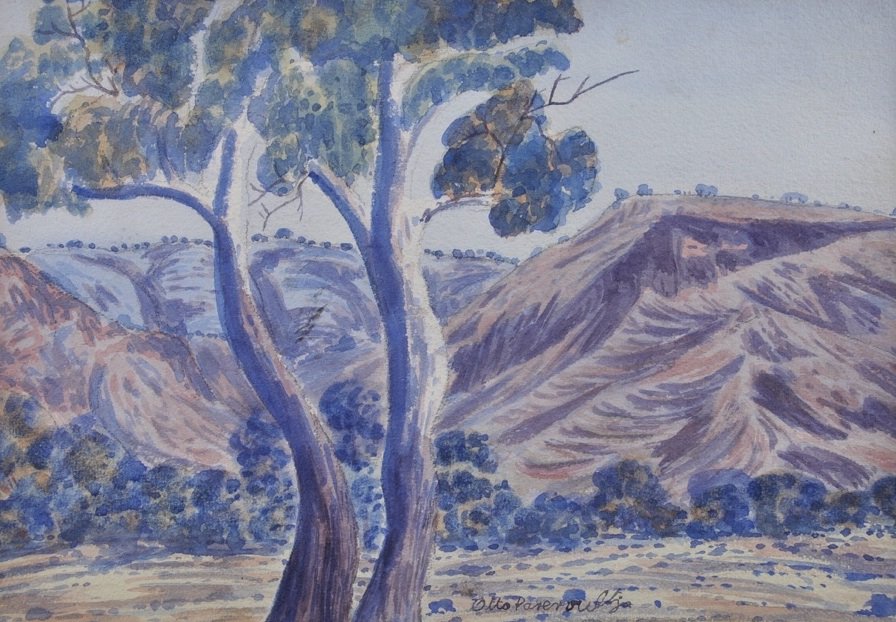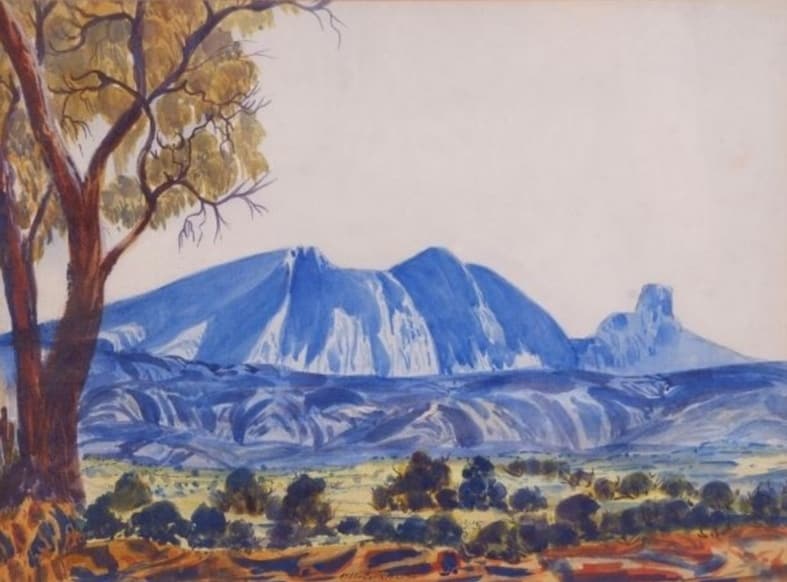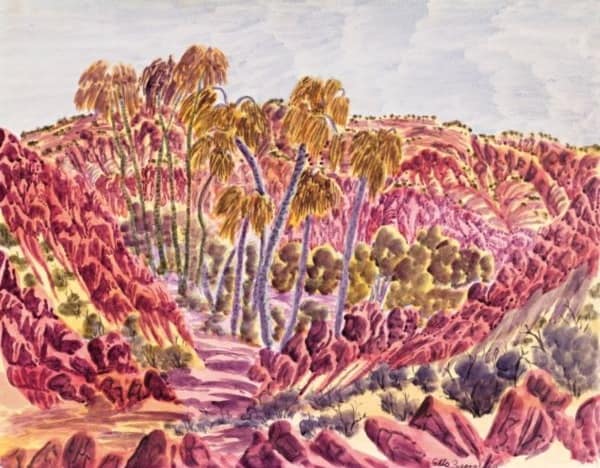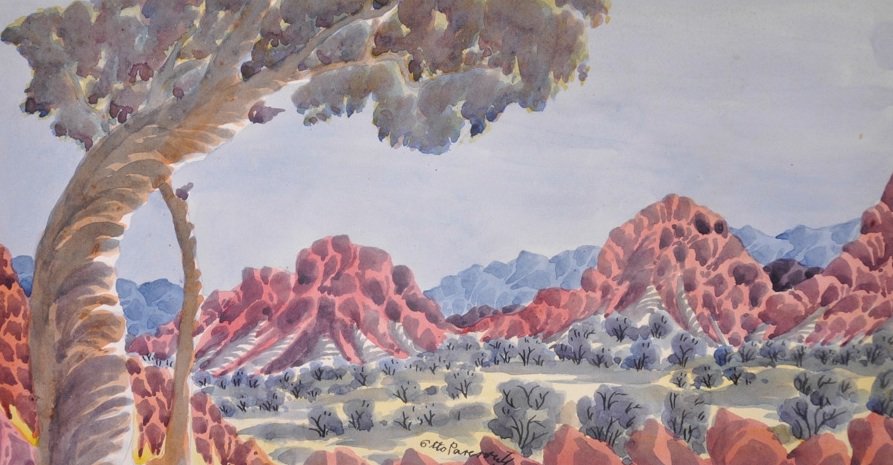Otto Pareroultja : Aboriginal Impressionist
Otto Pareroultja was an aboriginal artist who painted watercolors in a Hermannsburg style. He was a part of a new generation to follow Albert Namatjira as a watercolor landscape artist. Unlike Namatjira who was a realist, Otto Pareroultja was an impressionist.
If you have an Otto Pareroultja painting to sell please feel free to contact me. If you want to know what your Otto Pareroultja painting is worth please send me an image. I would love to see it.
Otto Pareroultja is often overshadowed by the more famous Albert Namatjira. This is a huge shame because they were very different artists and both excel in their own right.
Other Pioneering Aboriginal artists include Tommy McRae Yirawala and Cardo.
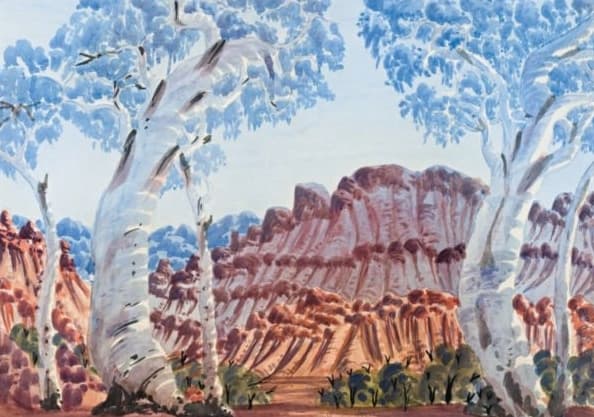
Got one to sell?
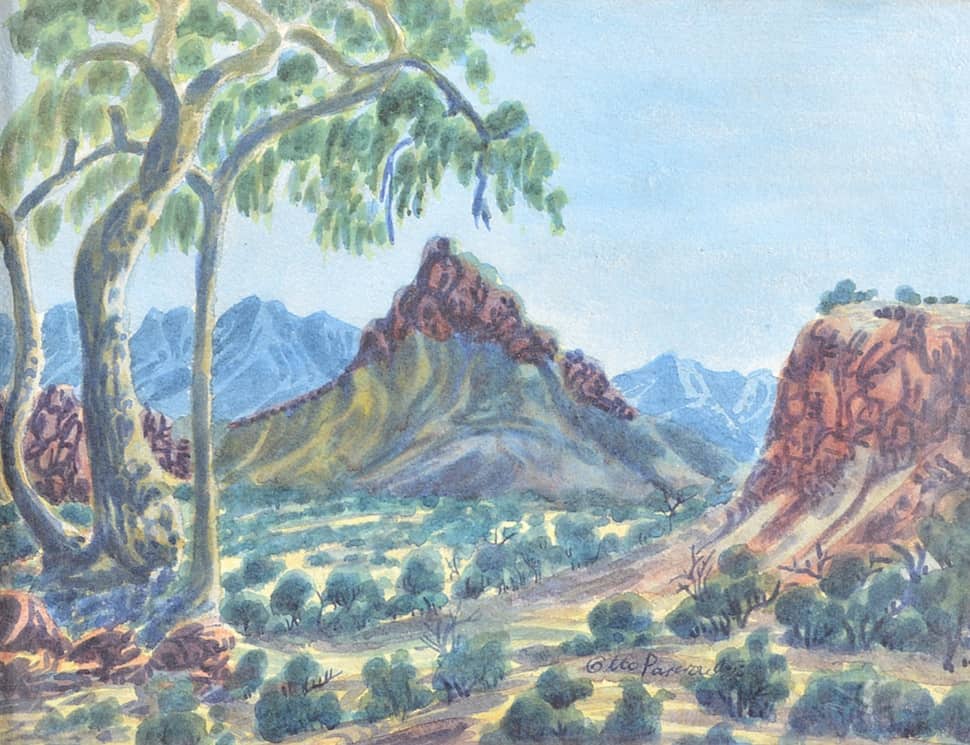
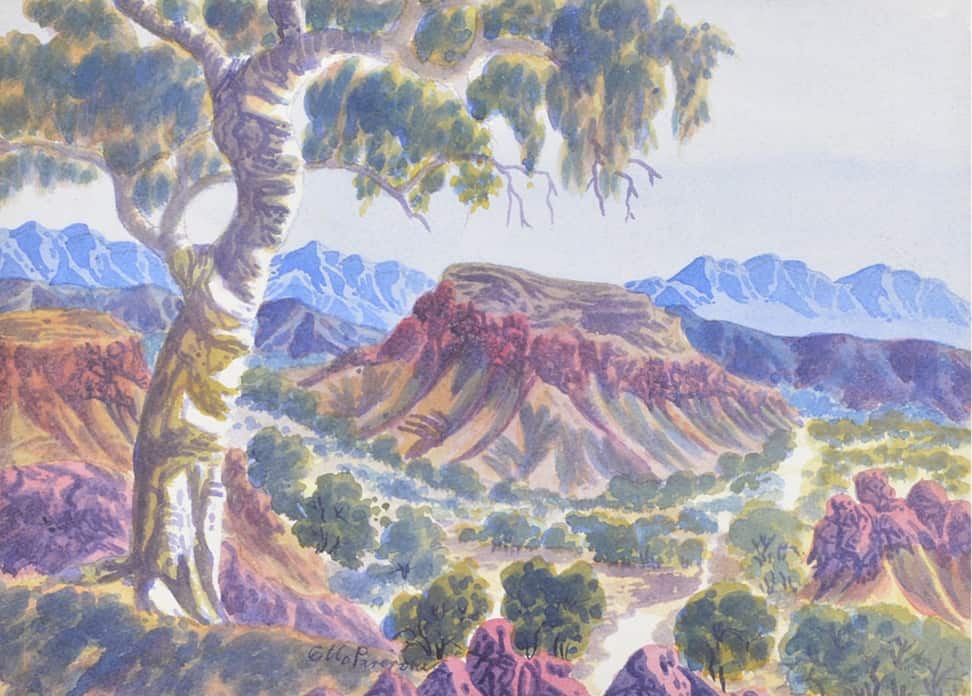
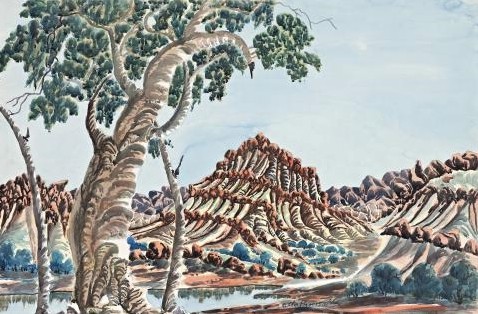
Above: Gradual changes of Otto’s style
Otto Pareroultja Style
Otto Pareroultja Landscapes have bright color, dense patterning, and rhythmic repetition. Rhythmic repetition is most obvious in mountain slopes and more abundant in his later works.
His later painting is not realistic like Albert Namatjira. They are more like European impressionists such as Vincent van Gogh and Paul Gaugin. It is the lack of realism that makes his art excel. In many ways, he painted how the outback landscape felt, not how it looked. He was painting the spirit and the songlines of sacred land and not mere trees and mountains.
Otto Pareroultja never departed from the use of watercolor over the course of his artistic career.
Otto Pareroultja developed his own distinctive styles within a modern European landscape idiom. His paintings of the desert landscape are less representational than in Namatjira’s work. His style changed over time becoming increasingly Impressionist, stronger, and fuller of life. He used vigorous, sinuous lines, dynamic areas, and repeated patterning. His use of stronger than natural colors is unrealistic and yet still captures the outback character
His early paintings are much like those produced by several other artists in his area. Over time his paintings lost their European correctness. They became more paintings of the spirit of the landscape and not just the landscape itself. It is these strong spiritual impressionist landscapes that are most collectible.
Anthropologist T.G.H.
It is this spiritual resonance in his painting that distinguishes Pareroultja art.
Aboriginal Impressionist
Otto did more than paint what he saw he painted what he felt. His deep connection to the country reflected in his later works. For example in the work opposite Pareroultja cropped the image so that the focus is on the trunk of a mature tree. The tree though is not isolated as he merges it using color into the distant landscape and the sky. The connection between life and landscape is further achieved by mirroring the tree bark and mountain slope.
Otto also drew on his heritage to introduce ancient Aranda motifs into his landscape paintings. These motifs usually found on churinga (sacred objects) depict totemic Ancestors. Like Churinga Otto has balanced and repetitive designs giving his art a sense of timeless rhythm.
It was his ability to integrate aboriginal culture into European landscape paintings that makes him a master.
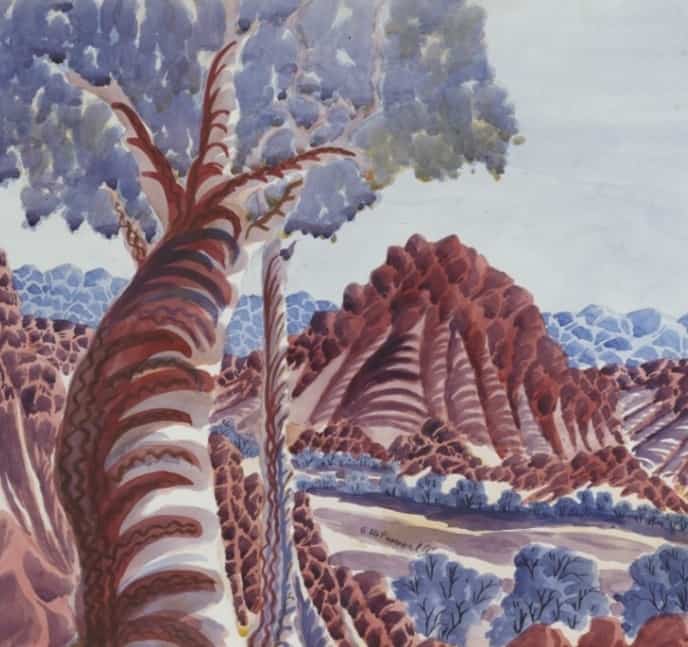
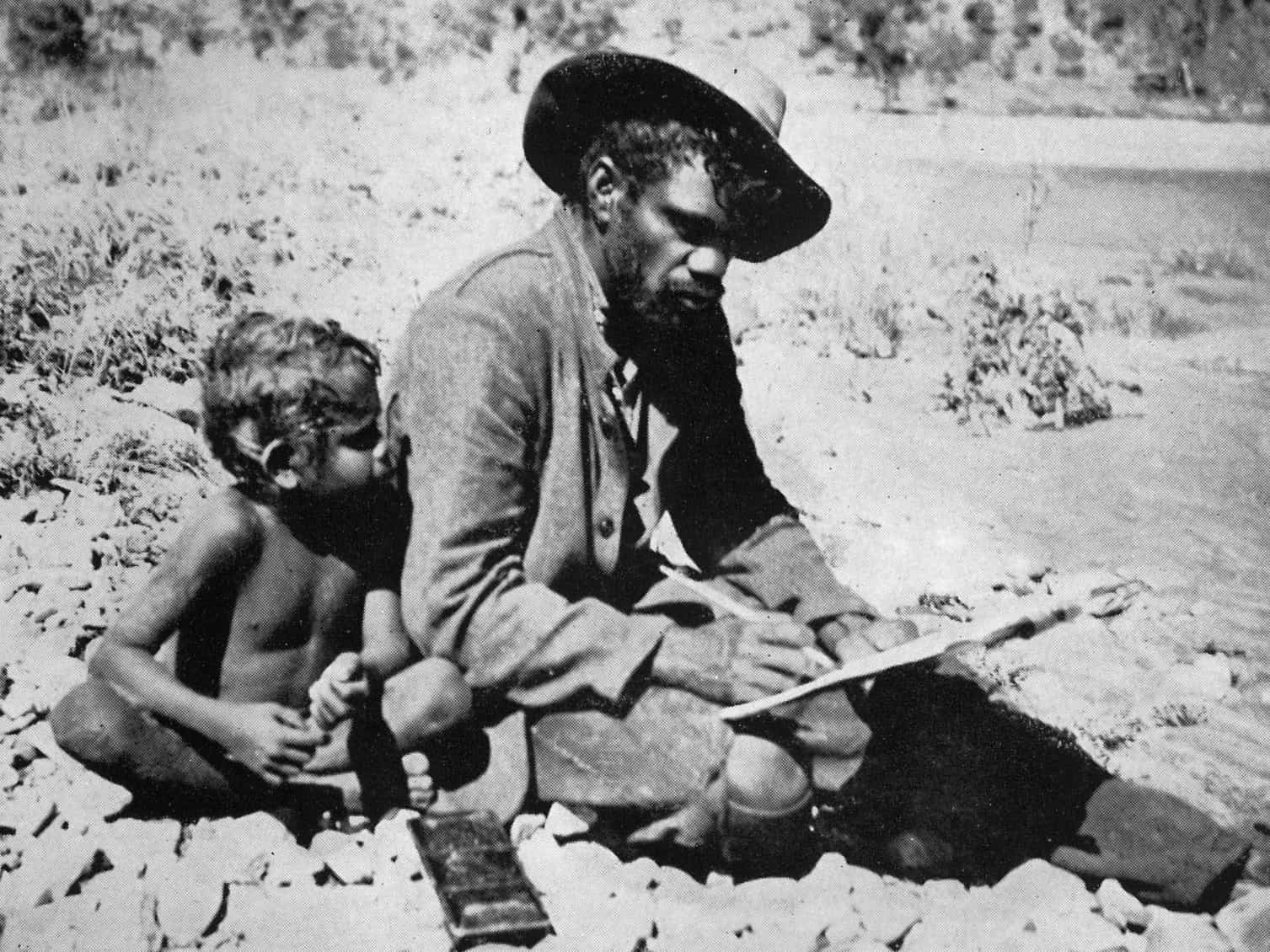
Biography
Otto Pareroultja Was Born around 1914 and was a member of the Arunta Tribe. He was the oldest of three brothers that Rex Battarbee referred to as the ‘breakaway group’. Pareroultja was twelve years younger than Namatjira. Like Namatjira, Otto was taught to paint by Rex Battarbee. Battarbee was a realist and had a preference for works by Otto’s younger brother Edwin.
Landscape painting as taught at the Lutheran mission, and practiced by the majority of community painters. While Otto painted from 1947 onwards his work was largely overshadowed by that of Albert Namatjira.
Over time Otto developed his own increasingly impressionist style. This impressionist style was not really appreciated until the early 1980’s. In the 1980’s several of his works were in exhibitions.
This led to his inclusion in the Great Australian Art Exhibition 1788-1988 at the Art Gallery of South Australia.
If anyone has further information about Otto’s life please feel free to contact me. I would love to add it to this article.
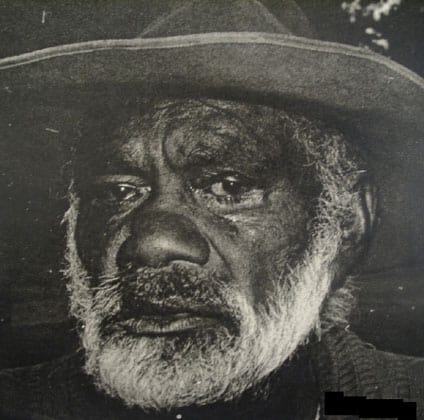
All images in this article are for educational purposes only.
This site may contain copyrighted material the use of which was not specified by the copyright owner.
Otto Pareroultja images
The following images are not the complete known work by this artist but give a good idea of his style and range.

